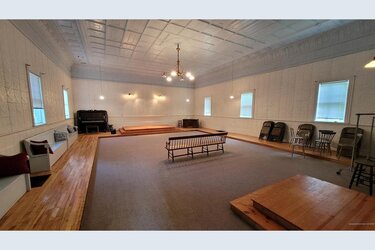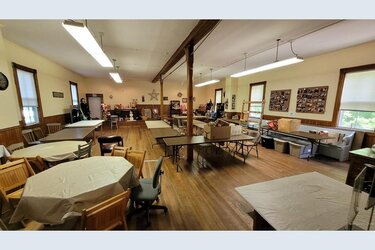Hello all, thanks for the read. Closing on an old Masonic hall ( 1872) Wondering if stove pipe lengths are going to be a problem with drafts? 1st flood is 12ft ceiling, 2nd is 18 ft. Then the is an attic. Both pipes will be straight up. Woodstock stoves, Ideal Steel on bottom, Progressive hybrid on top. House has siding with minimal insulation. Attic need it and has none as of yet. I'm guessing alot of wood. So is this going to work and heat this place to a livable temp??
Thoughts and knowledge appreciated.


Thoughts and knowledge appreciated.



